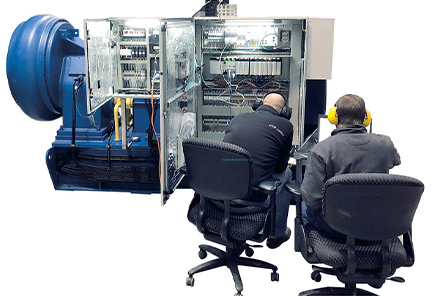Posted on February 12, 2024
“Unleashing the Power of PLC Controller Programming: How to Optimize Manufacturing Efficiency”
In the world of manufacturing, efficiency is key. With tight deadlines, increasing competition, and the constant need to improve productivity, finding ways to optimize manufacturing processes is essential. One powerful tool that can help achieve this goal is PLC (Programmable Logic Controller) controller programming.
A PLC is a specialized computer used to control machines and processes on the factory floor. By programming a PLC, manufacturers can automate tasks, monitor production, and make real-time adjustments to optimize efficiency and reduce downtime. Let's explore some key strategies for harnessing the power of PLC controller programming in order to maximize manufacturing efficiency.
1. Develop a Comprehensive Control Strategy
Before diving into PLC programming, it is important to develop a comprehensive control strategy. This involves analyzing the manufacturing process, identifying areas for improvement, and defining clear objectives. By having a solid understanding of the desired outcome, manufacturers can design a PLC program that is tailored to their specific needs.
2. Optimize Control Algorithms
The effectiveness of a PLC program relies heavily on the control algorithms implemented. By fine-tuning these algorithms, manufacturers can optimize the control of machines and processes. This may involve adjusting variables such as speed, temperature, pressure, and flow rates to ensure optimal performance. Regularly reviewing and refining control algorithms will help maintain efficiency and address any issues that arise.
3. Implement Real-Time Monitoring
Real-time monitoring is a crucial aspect of PLC controller programming. By integrating sensors and other measurement devices with the PLC system, manufacturers can gather valuable data about the production process. This data can then be used to make informed decisions and identify opportunities for improvement. Real-time monitoring allows for quick detection of deviations from desired performance, enabling prompt corrective actions to be taken.
4. Utilize Predictive Maintenance
Unplanned downtime due to equipment failure can significantly disrupt manufacturing operations and lead to loss of productivity. PLC controller programming can help mitigate this risk by implementing predictive maintenance strategies. By continuously monitoring machine performance and analyzing data, manufacturers can detect early signs of equipment malfunction or wear, allowing for timely maintenance and preventing unexpected breakdowns. This proactive approach to maintenance reduces downtime, increases equipment lifespan, and improves overall efficiency.
5. Integrate PLC Systems with Other Technologies
PLC controller programming becomes even more powerful when integrated with other technologies. For example, connecting the PLC system to an MES (Manufacturing Execution System) allows for seamless data exchange between the shop floor and the control room. This integration enables better coordination, synchronization, and optimization of manufacturing processes, leading to improved efficiency and resource utilization.
6. Implement Continuous Improvement Practices
Maximizing manufacturing efficiency is an ongoing process. To fully harness the power of PLC controller programming, it is essential to establish a culture of continuous improvement. Encouraging employees to provide feedback, analyzing data for insights, and regularly reviewing and updating PLC programs will ensure that manufacturing processes remain optimized and efficient over time.
In conclusion, PLC controller programming offers manufacturers a powerful tool to optimize manufacturing efficiency. By developing a comprehensive control strategy, optimizing control algorithms, implementing real-time monitoring, utilizing predictive maintenance, integrating PLC systems with other technologies, and implementing continuous improvement practices, manufacturers can unleash the full potential of PLCs and achieve higher levels of productivity, quality, and profitability.

